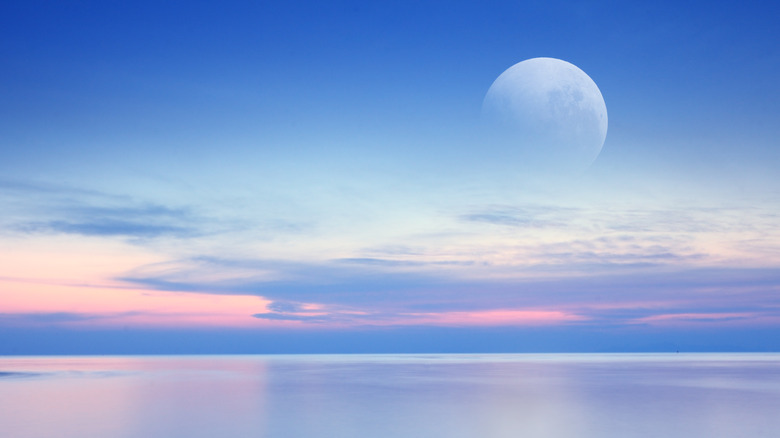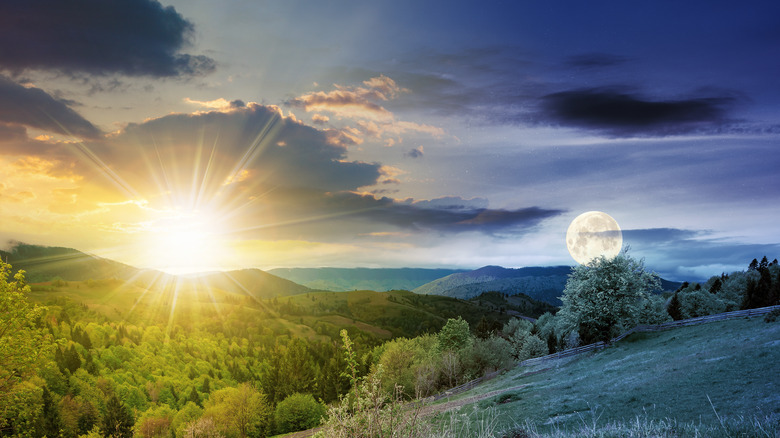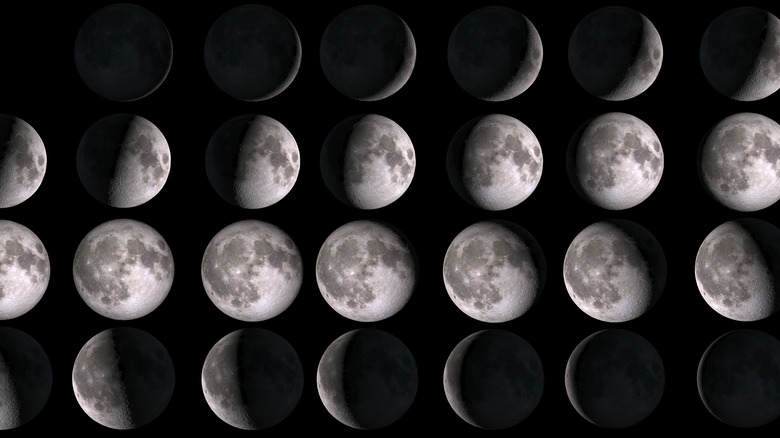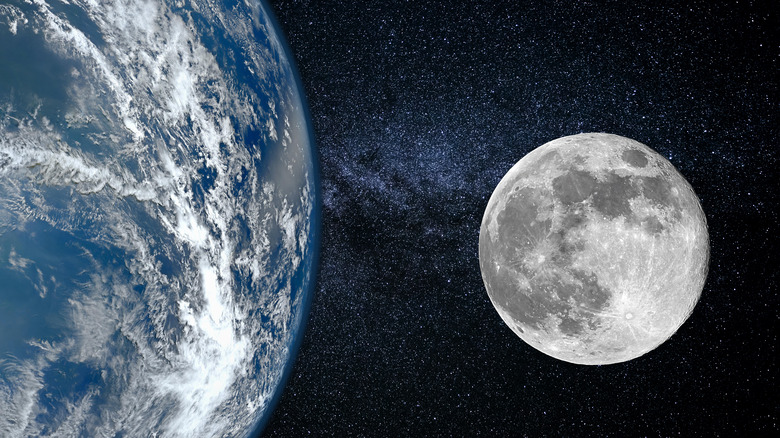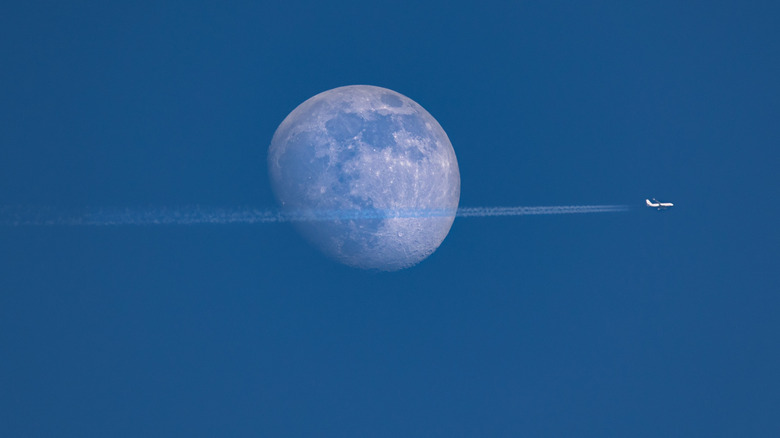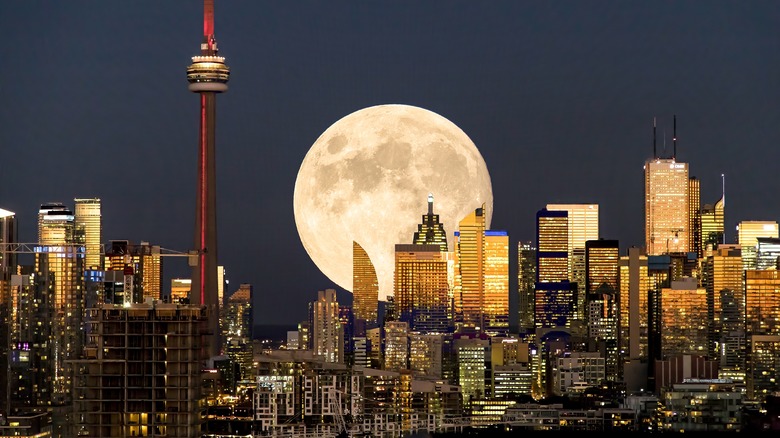Why You Sometimes See The Moon During The Day
While the sun is typically associated with daytime, Earth's moon is frequently associated with the night. Yet you may have spotted Earth's closest companion while outside during the day. In fact, you may have noticed that the moon is actually visible most days before dark (via Space.com). The moon, unlike the sun, can be seen both during the day and at night. But why is that?
It turns out our most common way of thinking about the moon may be a bit faulty. Most of us think of the moon as a nighttime object, like the stars and planets. After all, the moon tends to be most visible during nighttime hours. But the moon is not only out during the night, according to NASA. In fact, neither are many stars and planets. It is because we see these things more easily at night that we don't realize they are out all the time. It's just too bright out to notice.
The moon does not rise and set with the sun
The sun has a window in which it becomes visible in the morning and sets at night. This is because the Earth takes just under 24 hours to complete one rotation (via Scientific American). At any given point during that rotation, you will either be on the side of the Earth facing the sun, or the side away from the sun. The sun is probably the easiest object in space to understand because of this predictability.
When it comes to the moon, things work a bit differently. While it spends the same amount of time above the horizon as the sun, it doesn't follow the same rise-and-set schedule. This is because the moon is revolving around the Earth at the same time the Earth is rotating. According to Space.com, it takes the moon a little less than a month to orbit the Earth, during which the Earth will complete around 27-30 of its 24 hour rotations. This leads to changes in the time that the moon will rise and set, as its position around Earth moves slightly each day.
The time the moon is visible is determined by its orbit
The exact 12 hour window in which the moon will be above the horizon is determined by where the moon is in its journey around our planet. In fact, you can always expect to see the moon rise and set at the same time if it is in the same phase. During the full moon phase, for example, the moon will always rise around sunset (via Almanac).
According to NASA, the reason we can predict when the moon will rise depending on its phase is because each phase represents the moon's position around the Earth in reference to the sun. Since the moon reflects sunlight, a full moon means that the moon is on the opposite side of Earth from the sun. A new moon, when no light from the sun reflects off the side of the moon's surface facing us, occurs when the moon is between the sun and Earth.
The phase of the moon can tell us where the moon is located
The phase of the moon lets us predict when it will be visible. It also allows us to determine where the moon is in its orbit. This is because, just like Earth, half of the moon is always lit up by the sun (via ResearchGate). On Earth, this cycle lasts 24 hours, but the moon takes a full month for each side to be bathed in sunlight. As the moon revolves around Earth, a new portion of it gets covered in sunlight while another portion goes back into darkness.
The phase we see of the moon depends on its position from Earth. When you see a quarter moon, where half the moon appears to be illuminated, it means the moon is off to the side of Earth in relation to the sun. According to Sky and Telescope, we are only seeing a quarter of the moon (half of the half we can see) because the other quarter that is currently lit up by the sun is not facing Earth. When we see a full moon, which is on the opposite side of Earth from the sun, we are seeing only the half of the moon that is currently illuminated by the sun.
The Moon is visible in daylight most of the month
As it turns out, the moon is visible during at least part of the day 25 days of the month, according to Live Science. The only times of the month when the moon is not out during the day are full moon and new moon. During a full moon, the moon rises at sunset and sets at sunrise, meaning it will not be out at all during daylight (via Space.com). This is one of the best times of the month to view the moon, because it is at its highest point in the sky at midnight, when the sky is the darkest.
During a new moon, the reason we don't see the moon at all is not only because sunlight is not shining on the side facing us. In addition to not being illuminated by the sun from our perspective, the moon also rises at sunrise and sets at sunset. This means that the dim, unlit moon is washed out by the brightness of daytime, making it virtually invisible (via NASA).
Earth's atmosphere makes it difficult to see the Moon some days
According to Live Science, if the Earth didn't have an atmosphere, we would actually be able to see the moon all month long, because it is out during the day every day except during its full moon phase. The Earth's atmosphere scatters blue light from the sun across the sky, giving it a light blue shade. When it does this, the brightness of that sunlight prevents us from seeing into space, making stars and planets disappear from our perspective.
Despite the Earth's atmosphere blocking most light from space other than the sun's, the stars, planets, and the moon are all still there. During a new moon, we cannot see the moon in daylight because of the brightness of the sky. The moon is still here, but the half that is facing the sun is not the half that is facing us at that time of the month. The phase only lasts around two or three days, so it is only a matter of time before the moon is visible to us again (via Sciencing).
